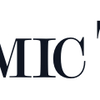- Today is:
ET NEWS
GST 2.0: Middle class cheer or boardroom bonus?
Trump claims Xi, Kim & Putin conspiring against US
China's services growth hits 15-month high in Aug
Sterling, yen dragged by fiscal and political worries
The British pound and the yen came under pressure on Wednesday, following heavy selling stoked by renewed investor worries about the health of government finances globally and political uncertainty in Japan. Traders had dumped long-end government bonds in Europe and the U.S. in the previous session as focus once again shifted to rising debt levels across major economies, rekindling fears that governments around the world are losing their grip over fiscal deficits. The selloff was stark in the gilt market as Britain's 30-year borrowing costs rose to their highest levels since 1998, which also left sterling vulnerable as it tumbled more than 1% on Tuesday. The pound last traded 0.12% lower at $1.3378. "It's a problem Europe-wide, basically. I think France has got the same issues...it's been in the background for quite some time," said Ray Attrill, head of FX research at National Australia Bank, referring to the worsening fiscal positions of governments. "It's probably resonating a bit more in the UK because of memories of the Liz Truss episode... I think part of the concern is that there's an autumn statement or a budget that's coming up. "I think at this stage, there's a lack of confidence in markets that the government is willing to address effectively the scale of the budget deficit and the speed of debt buildup." Over in Japan, the yen was similarly down 0.2% at 148.62 per dollar, having slid 0.8% in the previous session after the Japanese ruling party's secretary general Hiroshi Moriyama, a close aide to Prime Minister Shigeru Ishiba, said he intends to resign from his post. That could potentially affect the fate of Ishiba, who has resisted calls to quit over an election loss. "On the surface, political uncertainty, and the possibility that Prime Minister Shigeru Ishiba might resign in the coming days or weeks, is having a debilitating impact on the yen," said Kit Juckes, Societe Generale's chief global FX strategist. Sanae Takaichi, one of the leading contenders to replace Ishiba, is known for favouring low domestic interest rates. The slide in sterling and the yen in turn lifted the dollar, which last stood at 98.44 against a basket of currencies having gained 0.66% on Tuesday. The euro was down 0.1% at $1.1630, extending its 0.6% fall from the previous session, while the Australian dollar similarly eased 0.1% to $0.6514. The New Zealand dollar last traded 0.14% lower at $0.5857. Fiscal and political worries aside, investors also had their eye on a slew of U.S. labour market data releases this week, headlined by Friday's nonfarm payrolls report. That could provide investors and the Federal Reserve a clearer picture of the labour market that has become the centre of policy debate, and could either underscore or cast doubt on expectations of a rate cut later this month. The two-year U.S. Treasury yield, which typically reflects near-term rate expectations, eased slightly to 3.6495% on Wednesday, though the 30-year yield was just a whisker away from the 5% level, in line with the global rise in long-end bond yields.
China shows its weaponry for first time in parade
CA exams delayed in Punjab cities, Jammu city
US House committee releases some Epstein case files
China hosts military parade in defiance of West
US strikes drug-carrying boat from Venezuela: Trump
At least 25 killed in Pakistan attacks
At least 25 people were killed in three attacks in Pakistan on Tuesday, officials said, including 14 who died after a suicide bomber targeted a political rally in the southwestern province of Balochistan. Dozens of people were wounded in that explosion, which took place in the parking lot of a stadium in the provincial capital, Quetta, where hundreds of members of the Balochistan National Party (BNP) had gathered, two provincial officials said, speaking on condition of anonymity.At least seven of the wounded were in critical condition, the officials said.Another attack in Balochistan, near the border with Iran, claimed five lives on Tuesday, while six soldiers were killed after a suicide attack on their base in Khyber Pakhtunkhwa province. Balochistan is Pakistan's largest and most resource-rich province, but also its poorest, and regularly ranks among the lowest on human development indicator scorecards. The BNP campaigns on a platform calling for greater rights and economic investment in the wellbeing of members of the Baloch ethnicity.The party's chief, Akhtar Mengal, had just finished speaking at the Quetta rally and was leaving the venue when the attack occurred. He said he was "safe" in a post on social media. Since 2014, China has invested significantly in building a road-and-infrastructure project in Balochistan linked to its One Belt One Road initiative. Many Baloch, however, say the benefits have been reaped only by outsiders.Pakistani forces have been battling an insurgency in the province for more than a decade, and in 2024 the region saw a sharp rise in violence, with 782 people killed. Elsewhere in Balochistan on Tuesday, five paramilitary personnel were killed and four wounded when a homemade bomb exploded as their convoy passed through a district near the Iranian border, a senior local official told AFP.No group immediately claimed responsibility for either attack. - Khyber Pakhtunkhwa attack -Since January 1, according to AFP figures, more than 430 people, mostly members of the security forces, have been killed in violence carried out by armed groups fighting the state in Balochistan and neighboring Khyber Pakhtunkhwa. On Tuesday, six soldiers were killed in an attack on a paramilitary headquarters in the Khyber Pakhtunkhwa city of Bannu, the military said. "A suicide bomber rammed an explosives-laden vehicle into the gate of the FC camp, after which five more suicide attackers entered," a government official told AFP, speaking on condition of anonymity.The ensuing exchange of fire lasted 12 hours, ending after the six attackers were killed, the official said. The militant group Ittehad-ul-Mujahideen Pakistan claimed responsibility for that attack.
How will Sebi's new intraday limits impact equity index derivatives?
Mumbai: The Securities and Exchange Board of India (Sebi) has tightened intraday position limits in equity index derivatives, reviving an earlier plan to monitor such trades as it aims to rein in outsized bets on expiry days, and curb volatility as well as the possibility of market manipulation.Under the new framework that will kick in on October 1, each trading entity can take a maximum intraday net futures-equivalent position of ₹5,000 crore in index options, compared with the existing end-of-day cap of ₹1,500 crore. This means traders must not exceed the ₹5,000 crore position limit intraday and must cut it to ₹1,500 crore by the close. There has been no intraday ceiling so far. The intraday gross futures equivalent limit has been set at ₹10,000 crore on both long and short sides-in line with existing end-of-day gross limit.In a circular dated September 1, Sebi said it has observed instances of outsized intraday positions created by certain entities in index options on the day of contract expiry and the risks to market integrity. The regulator has been wary of big players such as foreign hedge funds, large trading firms and proprietary desks with superior technology.123667048 Intraday Monitoring Sebi is cautious about these players exerting undue influence on the derivatives market, particularly on expiry days. Its concern has been heightened by recent episodes such as US-based trading firm Jane Street allegedly manipulating the local derivatives market, leading to a temporary ban on it.Intraday monitoring helps Sebi keep a check on large, concentrated bets in index options, especially on expiry days when volatility tends to spike. "These revised norms are expected to significantly curb excessive short-term volatility and reduce the risk of market manipulation, increasing protection for retail investors," said Vipin Kumar, Assistant Vice President of Derivatives and Technical Research at Globe Capital Market.Under the monitoring system, stock exchanges will monitor exposures using at least four random intraday snapshots in a trading session, including one between 14:45 and 15:30 to capture heightened expiry-day activity.For entities breaching the limits, the regulator said "stock exchanges should examine trading patterns of such entities including seeking rationale for such positions from the clients and examining trading in the constituents of the index by the entity and discussing such instances with Sebi in the surveillance meeting".
Motown unclear what route cess will take past GST
Warburg eyes 10% stake in Kalyan Jewellers’ Candere
Pratap Snacks turns bitter for new owners
Prataap Snacks Ltd’s key shareholders led by Authum Investments and investor Madhusudan Kela are exploring an exit, just months after buying almost half the Indore-based chips and namkeen maker from erstwhile shareholders Peak XV Partners (formerly Sequoia Capital), said people in the know.Feelers have gone out to competitors including Haldiram, Advent-backed DFM Foods and ITC as well as private equity funds to gauge their interest in buying out a controlling stake or exploring a merger, as Pratap continues to face growth stagnation due to demand stress in the impulse pack segment and volatile raw material prices. Rivals such as Bikanervala, ITC, Parle, Balaji Wafers and Crax besides dozens of D2C players such as Baked BRB and regional ones like Sweet Karam and Chitale Bandhu are competing for the Rs 47,000 crore Indian snacks market. The development also comes at a time when players such as Haldiram are preparing a blueprint for significant growth and expansion after raising $1 billion from private equity investors at a $10 billion valuation earlier this year. 123663990Publicly listed shadow lender Authum Investment and Infrastructure Limited (AIIL) led by Alpana and Sanjay Dangi is the single largest stakeholder and part of the promoter group, with a 42.93% voting share capital at the end of June. Brothers Amit and Apoorva Kumat, who belong to the founding family, along with their friend Arvind Mehta own 11.99%. Kela owns 7.41% via individuals and entities including wife Mahi Madhusudan Kela and Cohesion MK Best Ideas Sub Trust. The latter is a joint venture between Kela and Cohesion Investments. Other financial investors in the widely held local snack maker include Fearing Capital (2.01%) and Malabar India Fund (1.45%).Authum had initially announced its intention to acquire Prataap Snacks in September 2024, buying shares through an open offer as well as preferential allotment at Rs 865.66 and Rs 746 apiece, respectively. Following the acquisition, Prataap became an associate company of Authum. An exchange filing on February 27 showed Kela and AIIL owned 46.87%.The people cited said Authum and some of the other investors may collectively cash out. That will trigger an open offer for an additional 26% stake in the company. An exit by Authum and Kela alone would mean 55% of the company being up for grabs. However, these are early stage discussions and there are no guarantees it will lead to a transaction. Sources close to the investors said the company is trading at 3.3 times its book value and any efforts to sell now will not yield the best price when consumer deals at being struck at richer multiples.“Both Authum and Kela have just bought into the company and will give at least 4-6 quarters to turn it around,” said one of them. “The franchise, brand, its distribution network, land bank, have significant value. But end of the day, they are financial investors who are not even on the board of the company. So, at a good price they are sellers.”The stock ended at Rs 959.85, up 4%, on the NSE Tuesday for a market value of Rs 2,288.63 crore, having dropped 15.4% year to date.The Kumats didn’t respond to queries. Haldiram and DFM Foods didn’t comment. Dangi and Kela remained unavailable for comment.Cheeseballs to ChipsThe Kumat brothers, one of them an engineer, started in FY04 with an initial investment of Rs 15 lakh, selling cheeseballs from a cramped office in Indore’s Navlakha area. Prataap Snacks was incorporated in 2010 after merging with Prakash Snacks. In 2023, it merged with Avadh Snacks, six years after an IPO that was oversubscribed 47 times. It is currently a national player that sells a portfolio of savoury snacks and namkeens and has recently diversified into sweets and cakes.The company currently generates 85% of its revenue from the Rs5 packs against 55-60% for the industry. The volatility in raw material prices saw profitability take a hit in the past, as it focused on absorbing pressure in an inflationary environment and being competitive in a deflationary one. The management is now planning to push packs of Rs10 and above, and widen its footprint to bigger towns and cities.“Prataap’s ebitda margin is largely influenced by its gross-margin profile. Given high concentration of low unit packs, its ability to hike prices in a volatile raw material environment is weak,” said Nitin Gupta, analyst with Emkay Global. “For the company, steady inflation with growth is key for margin enhancement.”In parallel, the management has also undertaken a key exercise to identify key markets -- Delhi, Haryana, Madhya Pradesh, Maharashtra, and Assam as command markets, which are focused on range-selling. Uttar Pradesh, Bihar, Gujarat, and South India represent expand markets, where the company has low market shares with large potential. In the price sensitive eastern markets, Prataap’s management is optimistic about stronger demand for its pellet offerings under the flagship Yellow Diamond brand, including various flavors of extruded snacks such as Puffs, Rings, Wheels, Chulbule etc. In key growth markets it is looking to further leverage on Avadh’s sales distribution and infrastructure. “While Yellow Diamond’s strength used to be regional markets, the past two years have seen intense competition even within local markets, and resurgence of regional brands such as Balaji Wafers, Chitale Bandhu, Gopal namkeens and Sweet Karam which operated in limited markets capitalising on reach and discoverability by quick commerce platforms,” said an industry executive.
No insurance licence to VC-backed fintechs: Irdai
Tariff, ill-health & more: Trump speech highlights
Trump backs 50% India tariff to dim chances of a cut
Nehru's first official residence sold for Rs 1,100 crore
US could be a 3 world country without tariffs: Trump
Pagination

The Economic Times: Breaking news, views, reviews, cricket from across India
Subscribe to ET NEWS feed











Recent comments